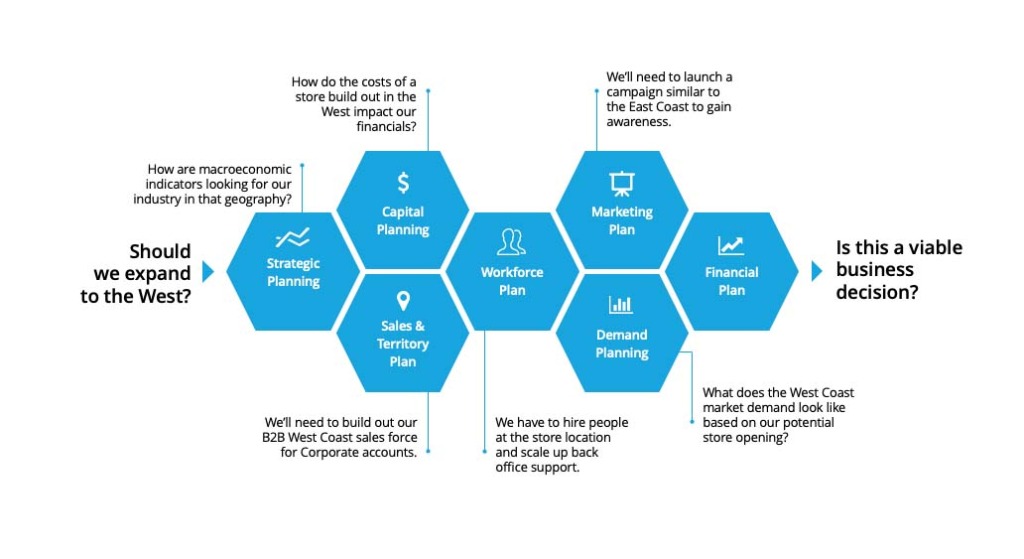Talking Tech: Connected Planning, The New C in the C-Suite
Let’s Talk Tech.
Accordion’s “Talking Tech” series explores how different CFO Technology solutions can empower finance functions to support organizational strategic initiatives – by implementing business process recommendations, optimizing operations, and capitalizing on value creation opportunities.
Now, let’s take a look at Anaplan in the context of connected planning.
If you follow current thought leadership in the business planning space, you have likely come across the concept of “connected planning”. At its core, connected planning improves a company’s historically siloed planning processes and more cohesively links them for better and more efficient decision making. Connected planning has been made possible in recent years with the advent of solutions, like Anaplan, that can easily serve the needs of multiple business units and use cases in a single platform.
From a conceptual perspective, this sounds great for a lot of obvious reasons. However, what does “a honeycomb” of connected planning look like operationalized? Let’s paint a picture of the power of the honeycomb with a (basic) example.
Meet Jennifer Jones, CEO of a rapidly growing (and hypothetical) apparel company called Tee Time.
Tee Time has Anaplan and a fully integrated connected planning process. Tee Time has seen amazing growth on the East Coast and is considering expanding to the West. She’s going to leverage her connected planning platform and team to help make the decision.
Here are Jennifer’s questions and decision points that, cohesively, are addressed through the connected planning honeycomb. Take a look and you’ll understand the buzz (pun intended) about the honeycomb solution.

The benefits of having a connected ecosystem for planning are obvious. They make business decisions easier for a number of key reasons:
- Dependent information (data) can easily flow back and forth through connected planning functions. For example, our capital plan timing for the store build out can impact when we need to start planning for retail staff hiring, which impacts our cash flow financial model and headcount plan.
- The planning areas shown in the honeycomb do not represent some abstract process or offline “black box” Excel sheets. They are real-time, connected models tailored to the function and team managing them – while still being a part of the same overall ecosystem. Getting the answer to this “what if” business decision takes a few hours or a couple days, not months or quarters.
- The system models are truly connected – there is no need for external IT tools to facilitate moving data (inputs and outputs) around to get answers or to introduce a point of failure.
- Arguably most important: There is accountability and auditability as to WHY this is viable business decision (or not).



